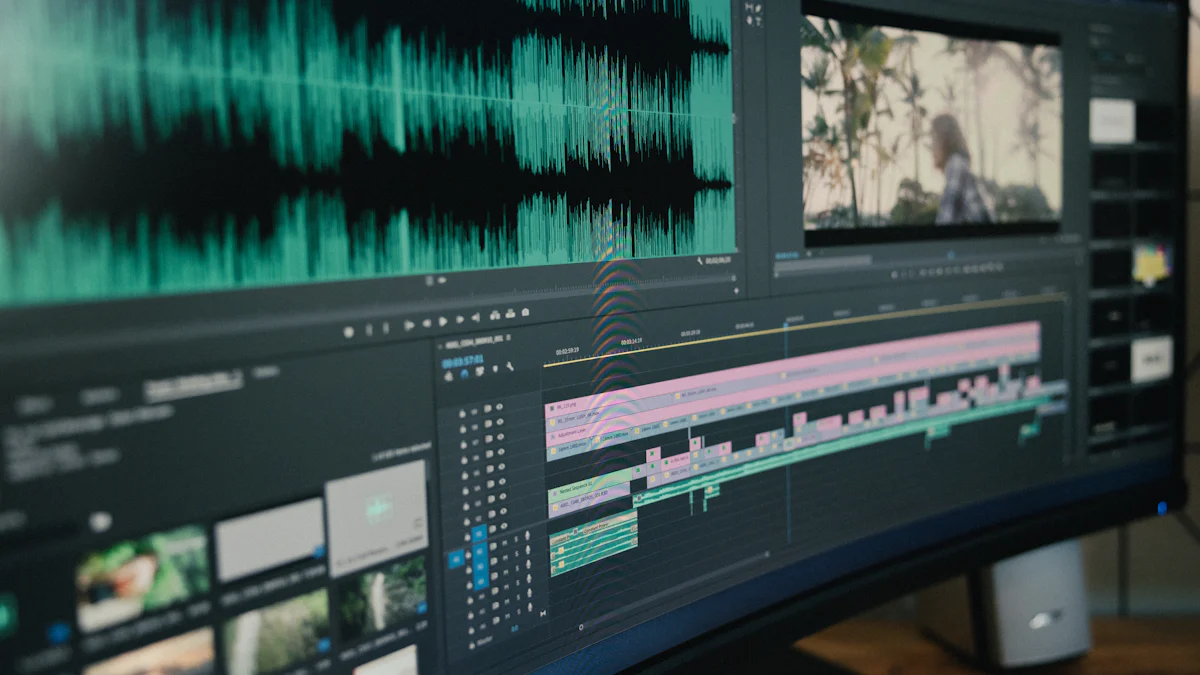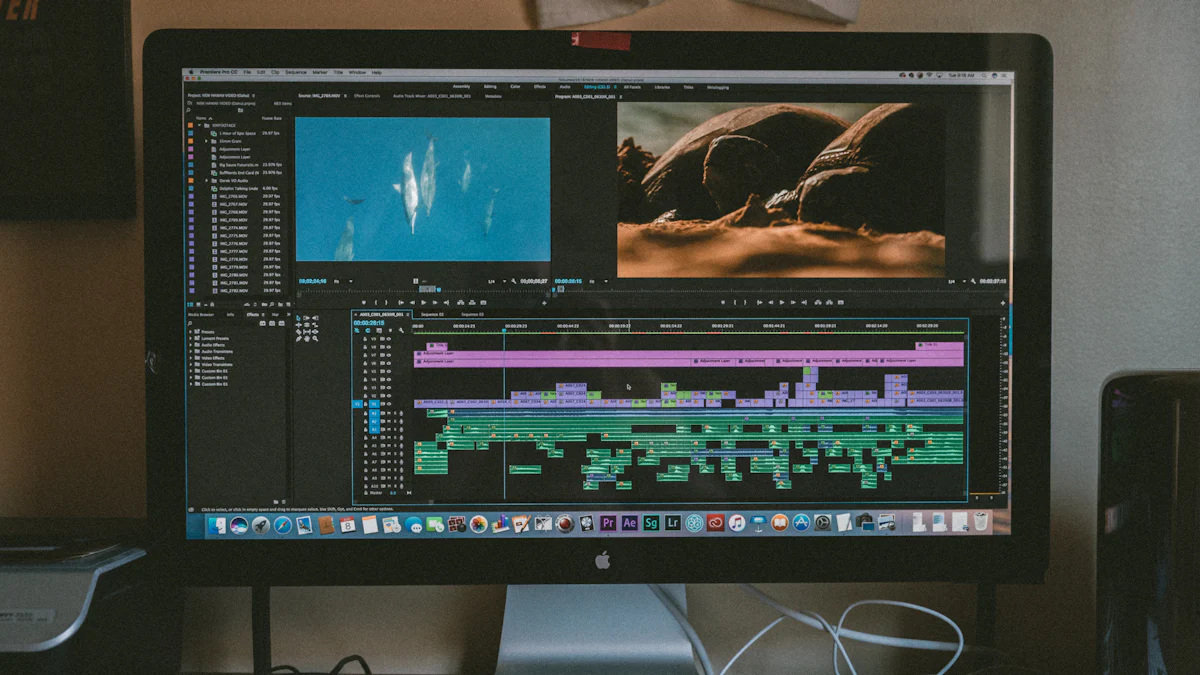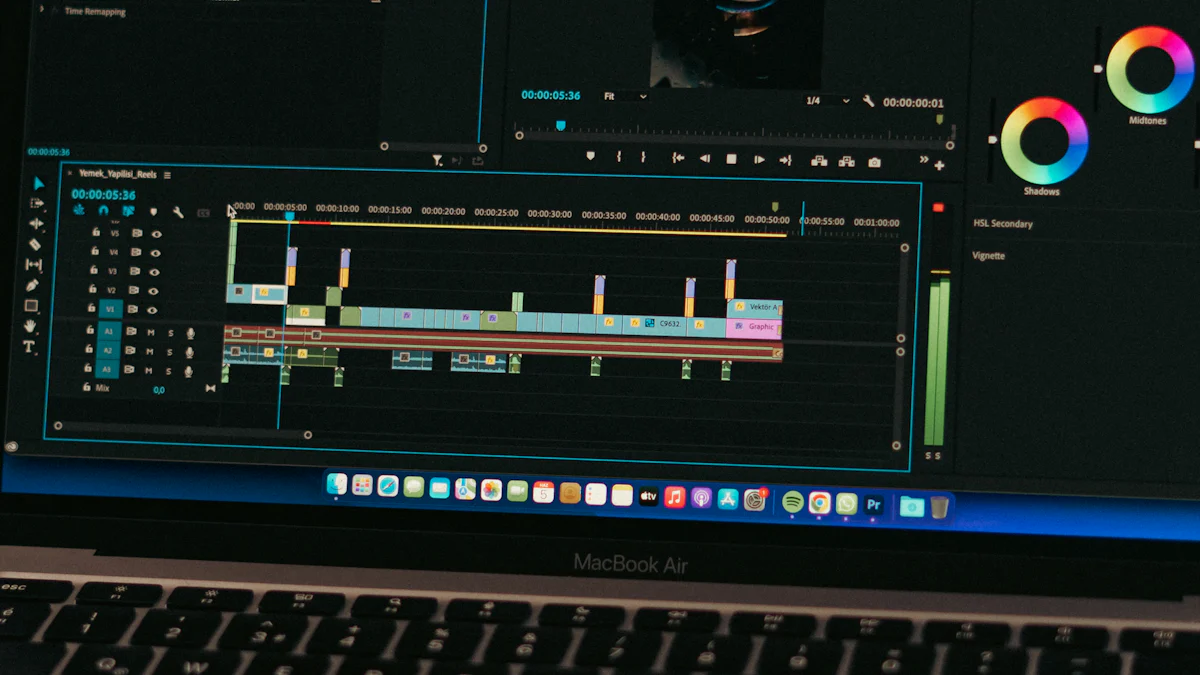Film Editing
How to Achieve Perfect Pacing in Film Editing
By
Alex Darke
July 22, 2024 11:58 pm

Image Source: unsplash
Pacing in film editing holds immense significance. It shapes the audience's emotional journey and engagement. Proper pacing can create tension, suspense, excitement, or clarity. Conversely, poor pacing can lead to boredom or confusion. The right pacing keeps viewers fully immersed and emotionally invested in the story. Film editing pacing techniques play a crucial role in achieving this balance. Understanding these techniques can transform a sequence of scenes into a captivating cinematic experience.
Understanding Pacing in Film Editing
Definition and Importance
What is Pacing?
Pacing refers to the speed and rhythm at which a film's narrative unfolds. Editors control pacing through the duration of shots, the frequency of cuts, and the overall flow of scenes. Pacing determines how quickly or slowly the story progresses, influencing the audience's engagement and emotional response.
Why Pacing Matters in Film
Pacing plays a crucial role in storytelling. It affects how viewers perceive the narrative and characters. Effective pacing can create tension, excitement, or clarity, enhancing the viewer's emotional journey. Poor pacing can lead to confusion or boredom, disrupting the audience's connection to the story. Pacing aligns with the narrative structure, impacting psychological and physical engagement.
Elements of Pacing
Rhythm and Tempo
Rhythm and tempo refer to the pattern and speed of cuts and transitions within a film. A fast tempo with quick cuts can generate excitement and urgency. A slow tempo with lingering shots can evoke contemplation or tension. Editors use rhythm and tempo to guide the audience's emotional experience and maintain interest.
Timing and Duration
Timing and duration involve the length of individual shots and scenes. Shorter shots can create a sense of rapid progression, while longer shots can allow for deeper immersion into a moment. The timing of cuts can emphasize important actions or reactions, enhancing the narrative impact. Proper timing and duration ensure that each scene contributes effectively to the overall story.
Emotional Impact
Emotional impact is the result of how pacing influences the viewer's feelings. Pacing can heighten suspense, amplify joy, or deepen sorrow. For instance, a well-timed cut during a dramatic moment can intensify the emotional weight of a scene. Editors manipulate pacing to align with the intended emotional tone, ensuring that the audience remains emotionally invested throughout the film.
Key Findings: Pacing is crucial in engaging viewers with the story, affecting emotions and attention. It can create tension, excitement, boredom, or clarity, influencing the audience's experience. Effective pacing aligns with narrative structure, impacting psychological and physical engagement.
Film Editing Pacing Techniques

Image Source: unsplash
Cutting on Action
Definition and Examples
Cutting on action involves making a cut from one shot to another while the subject is still in motion. This technique creates a seamless transition, maintaining the flow of movement. For example, an editor might cut from a character opening a door to a shot of the character entering the room. This method keeps the audience engaged by preserving the continuity of the action.
Benefits of Cutting on Action
Cutting on action enhances the visual fluidity of a scene. This technique reduces the jarring effect of abrupt cuts. It also maintains the viewer's immersion in the narrative. By aligning cuts with natural movements, editors can create a more dynamic and engaging viewing experience. This technique proves particularly effective in action sequences, where maintaining momentum is crucial.
Using Music and Sound
Role of Music in Pacing
Music plays a vital role in film editing pacing techniques. The tempo and rhythm of the music can dictate the pace of a scene. Fast-paced music can heighten excitement and urgency. Slow, melodic tunes can evoke a sense of calm or tension. Music helps to set the emotional tone and guide the audience's reactions.
Sound Effects and Their Impact
Sound effects contribute significantly to the pacing of a film. The timing and intensity of sound effects can emphasize actions and enhance the atmosphere. For instance, a sudden loud noise can create a jump scare in a horror film. Subtle background sounds can build suspense or provide context. Effective use of sound effects can make scenes more immersive and impactful.
Manipulating Time
Slow Motion and Fast Motion
Manipulating time through slow motion or fast motion alters the perception of events. Slow motion can highlight important moments, adding dramatic weight. Fast motion can convey a sense of urgency or chaos. Both techniques allow editors to control the viewer's focus and emotional response. Christopher Nolan often uses these techniques to create tension and excitement in his films.
Flashbacks and Flash-forwards
Flashbacks and flash-forwards disrupt the chronological order of a narrative. These techniques provide backstory or foreshadow future events. Flashbacks can deepen the audience's understanding of characters and motivations. Flash-forwards can create anticipation or suspense. Skillful use of these techniques can enrich the storytelling and maintain viewer interest.
Practical Tips for Editors

Image Source: pexels
Analyzing Successful Films
Case Studies
Studying successful films provides valuable insights into effective film editing pacing techniques. Analyzing iconic films like "Pulp Fiction" or "Inception" reveals how editors use pacing to enhance storytelling. Quentin Tarantino's "Pulp Fiction" employs non-linear narrative and varied pacing to keep viewers engaged. Christopher Nolan's "Inception" uses different layers of time, creating a complex yet captivating rhythm. Observing these films helps editors understand the impact of pacing on narrative flow and emotional engagement.
Lessons Learned
Learning from successful films involves identifying key pacing strategies. Editors should note how shot duration, transitions, and rhythm contribute to the overall impact. For instance, fast-paced sequences in action films like "Mad Max: Fury Road" maintain high energy and excitement. In contrast, slower scenes in dramas like "The Godfather" allow for character development and tension building. These observations provide practical lessons on how to apply film editing pacing techniques to different genres and narratives.
Tools and Software
Popular Editing Software
Choosing the right editing software is crucial for mastering film editing pacing techniques. Industry-standard options include Adobe Premiere Pro, Final Cut Pro, and Avid Media Composer. Adobe Premiere Pro offers versatility and integration with other Adobe products. Final Cut Pro provides a user-friendly interface and powerful tools for Mac users. Avid Media Composer is known for its robust features and reliability in professional settings. Each software has unique strengths that cater to different editing needs.
Features to Look For
When selecting editing software, editors should look for features that enhance pacing control. Key features include:
- Multi-track editing: Allows for complex layering of video and audio tracks.
- Precision trimming tools: Enable fine-tuning of shot duration and transitions.
- Real-time playback: Provides immediate feedback on pacing adjustments.
- Advanced audio editing: Ensures seamless integration of music and sound effects.
- Color grading tools: Enhance visual consistency and mood.
These features support the application of film editing pacing techniques, ensuring a polished final product.
Collaboration with Directors
Importance of Communication
Effective communication between editors and directors is essential for achieving perfect pacing. Directors have a vision for the film's narrative and emotional tone. Editors must understand this vision to align their pacing decisions accordingly. Regular discussions about scene objectives, emotional beats, and narrative flow ensure that both parties work towards a cohesive final product. Clear communication helps avoid misunderstandings and ensures that the pacing aligns with the director's intent.
Aligning Vision and Execution
Aligning the director's vision with the editor's execution involves collaborative decision-making. Editors should present pacing options and explain how each choice impacts the narrative. Directors can provide feedback and suggest adjustments based on their vision. This collaborative process ensures that film editing pacing techniques are used effectively to enhance the story. Successful alignment results in a film that resonates emotionally with the audience and maintains narrative coherence.
Film editing pacing techniques shape the audience's emotional journey. Proper pacing creates tension, excitement, or clarity. Poor pacing leads to boredom or confusion. Editors should practice and experiment with different pacing methods. Watching films of various genres provides valuable insights. Editing personal projects helps understand pacing's impact on mood and tone. Feedback from peers and mentors offers guidance for improvement. Perfect pacing requires continuous learning and adaptation. Mastering pacing enhances storytelling and audience engagement.

About the Author
Alex Darke is an Emmy-winning filmmaker, founder of the production company Momentous and owner of Filmmaking Central.

Filmmaking Central is a cutting-edge e-learning company dedicated to empowering aspiring filmmakers and content creators worldwide. With a robust library of comprehensive courses, expert-led workshops, and interactive learning materials, Filmmaking Central provides students with unparalleled access to industry professionals and innovative tools. By fostering an online community of passionate learners and storytellers, the platform aims to inspire creativity, develop essential skills, and ultimately cultivate the next generation of visionary filmmakers.
CONTACT
📍Las Vegas, NV
☎️ +1 888 494 5107
📧 hello@filmmakingcentral.com
SOCIAL
A Momentous Company © Filmmaking Central, All Rights Reserved. Here's our cookie policy page with all sorts of fun stuff. You know, privacy policy, disclaimer, and terms kind of stuff. Go back to the homepage or check out our courses and subscribe to our YouTube channel. You can also see our anti-SPAM policy, DCMA notice, earnings disclaimer, and affiliate disclosure.
